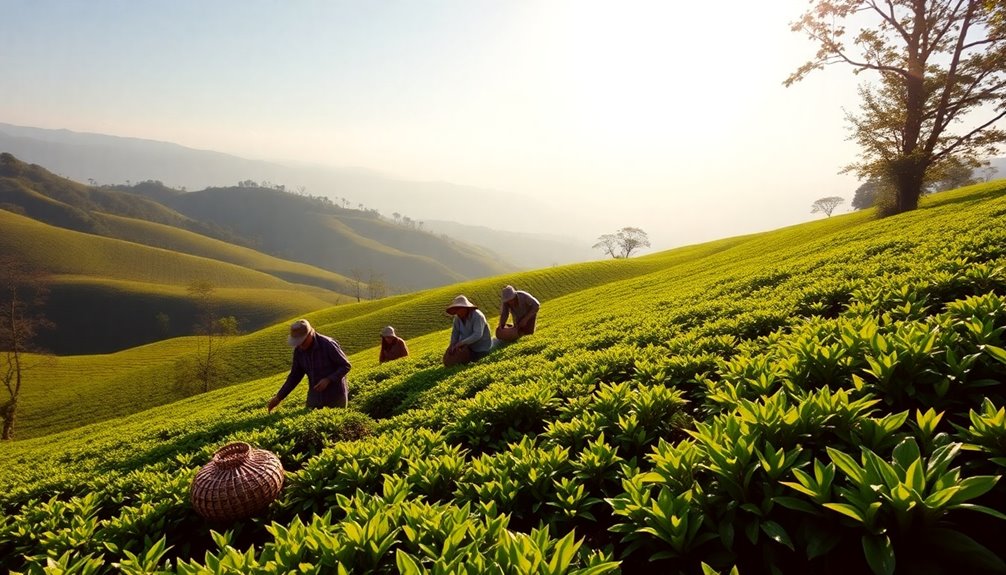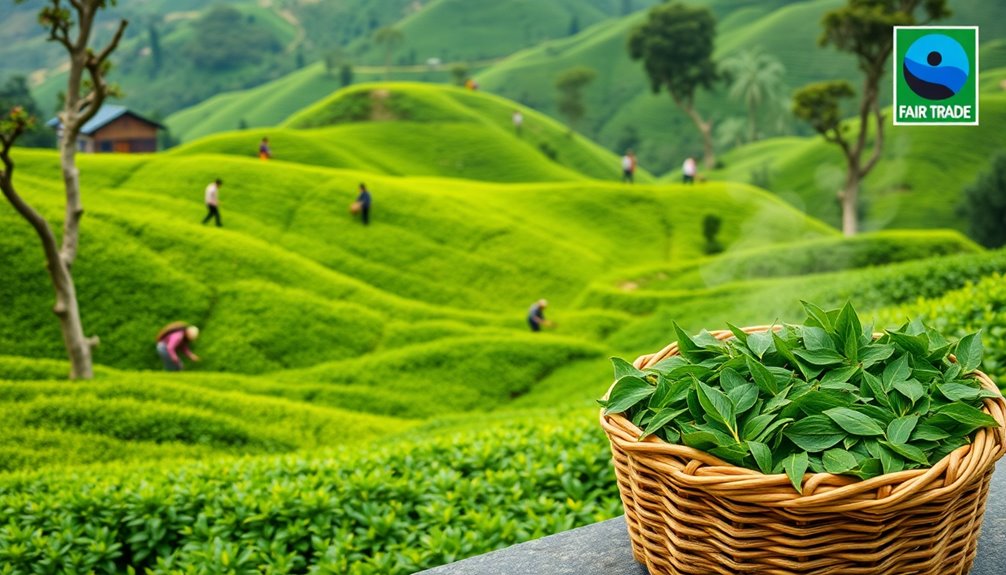The global bubble tea boom is driven by evolving consumer tastes for customizable and visually appealing drinks, supported by social media trends. Efficient supply chains guarantee the quick availability of exotic ingredients and fresh toppings, while innovations like healthier options keep the market expanding. Fierce competition pushes brands to optimize cost, introduce eco-friendly packaging, and stand out through flavor and presentation. Want to discover how these factors shape the industry’s future and impact your favorite brands? Keep exploring to find out more.
Key Takeaways
- Market trends like customization and social media influence have driven global demand for bubble tea.
- Supply chain efficiency, including sourcing quality ingredients, is crucial for meeting rising consumption.
- The shift toward health-conscious options expands ingredient sourcing and influences pricing strategies.
- Competitive differentiation relies on innovative flavors, sustainable packaging, and supply chain resilience.
- Future growth depends on balancing consumer preferences with supply chain adaptability and sustainable practices.

Bubble tea has become a global phenomenon, blending unique ingredients and cultural appeal to attract millions of consumers. As you observe this trend, it’s clear that understanding the market trends driving its popularity is essential. Consumers are increasingly seeking personalized beverage experiences, which bubble tea offers through customizable toppings, flavors, and sweetness levels. This customization fuels demand and keeps the market dynamic. Furthermore, the rise of social media has amplified the visual appeal of bubble tea, turning it into a must-share aesthetic that attracts younger audiences worldwide. This social-driven demand influences market trends, pushing shops to innovate with new flavors and presentation styles to stand out.
Bubble tea’s popularity soars through customizable options and social media-driven aesthetics.
Behind the scenes, the supply chain plays an important role in meeting this surging demand. From sourcing high-quality tapioca pearls to importing exotic teas and flavorings, every link in the supply chain must remain efficient. As you explore this industry, you’ll notice that supply chain disruptions—whether due to global shipping delays or ingredient shortages—can impact availability and prices. Many bubble tea brands now prioritize establishing resilient supply chains, diversifying suppliers, and maintaining inventory buffers. These measures guarantee they can fulfill customer orders without delays, especially during rapid growth phases or unforeseen disruptions. The supply chain’s robustness directly affects a brand’s ability to scale quickly and maintain consistent quality, which consumers have come to expect.
The market trends also reveal a shift toward healthier options, prompting suppliers to innovate with organic ingredients, reduced sugar, and plant-based alternatives. This aligns with broader consumer preferences for health-conscious products, influencing sourcing strategies and ingredient selection. As a result, supply chains expand to include organic farms and specialty suppliers, often increasing costs but also opening up new market segments. Additionally, the proliferation of bubble tea shops across different regions creates a competitive landscape, pushing brands to optimize their supply chains further for cost efficiency and freshness. You’ll find that those who adapt quickly to changing market trends and maintain flexible, reliable supply chains tend to outperform competitors. Incorporating tableware innovations, such as eco-friendly packaging and reusable cups, also enhances brand appeal and sustainability efforts.
Ultimately, the economic success of bubble tea’s global explosion hinges on a delicate balance between evolving market trends and a resilient supply chain. Staying attuned to consumer preferences, innovating with flavors and health-conscious options, and ensuring a steady flow of ingredients enable brands to thrive in this fast-paced industry. As you observe the growth, it’s clear that those who understand and adapt to these key factors will continue to shape the future of bubble tea’s booming market.
Frequently Asked Questions
How Does Bubble Tea Impact Local Economies in Emerging Markets?
You see, bubble tea boosts local economies in emerging markets by creating new employment opportunities and encouraging cultural influence. As shops open, you get more jobs for baristas, suppliers, and delivery workers. This not only supports families but also promotes cultural exchange, attracting tourists and locals alike. Your community benefits from increased spending and a vibrant social scene, making bubble tea a positive economic and cultural force in these markets.
What Are the Environmental Costs of Bubble Tea Production?
Think of bubble tea’s environmental impact as a ripple spreading outward. You might not see it, but production demands significant water consumption and often relies on non-sustainable packaging. These choices contribute to plastic waste and strain water resources. By switching to sustainable packaging and being mindful of water use, you can help reduce the environmental costs, turning your favorite treat into a more eco-friendly indulgence that’s kinder to the planet.
How Do Supply Chain Disruptions Affect Bubble Tea Availability Worldwide?
Supply chain delays and ingredient shortages directly impact bubble tea availability worldwide. When disruptions occur, you’ll notice fewer options or longer wait times at your favorite shops. These delays slow down the import and distribution of essential ingredients like tapioca pearls and specialty teas. As a result, producers face challenges in meeting demand, leading to inconsistent supply and potential price increases that affect your bubble tea experience.
What Role Does Social Media Play in Bubble Tea’s Global Popularity?
Think of social media as the sparkling fountain that fuels bubble tea’s rise. You see, social media marketing and influencer collaborations act like magnets, drawing global attention and tempting your taste buds. When influencers share their bubble tea adventures, they turn ordinary drinks into viral sensations. You’re part of this delicious wave, where every post and share amplifies the craze, making bubble tea a global phenomenon you can’t ignore.
Are There Economic Risks Associated With Bubble Tea Market Saturation?
You need to contemplate that market oversaturation can lead to increased competition, making it harder for new shops to succeed. This can cause price volatility, as businesses might lower prices to attract customers, risking profits. If too many bubble tea outlets open, the market could become flooded, leading to potential failures and economic losses. Staying mindful of these risks helps you navigate and adapt to changing market conditions effectively.
Conclusion
So, next time you sip that bubble tea, remember, you’re not just drinking a beverage—you’re part of a global phenomenon that’s reshaping economies! Your tiny order fuels international supply chains, creates millions of jobs, and turns a simple drink into a billion-dollar empire. It’s almost like you’re wielding the power to make or break entire markets with just one straw. Who knew that a little cup of tea could hold such world-changing magic?










